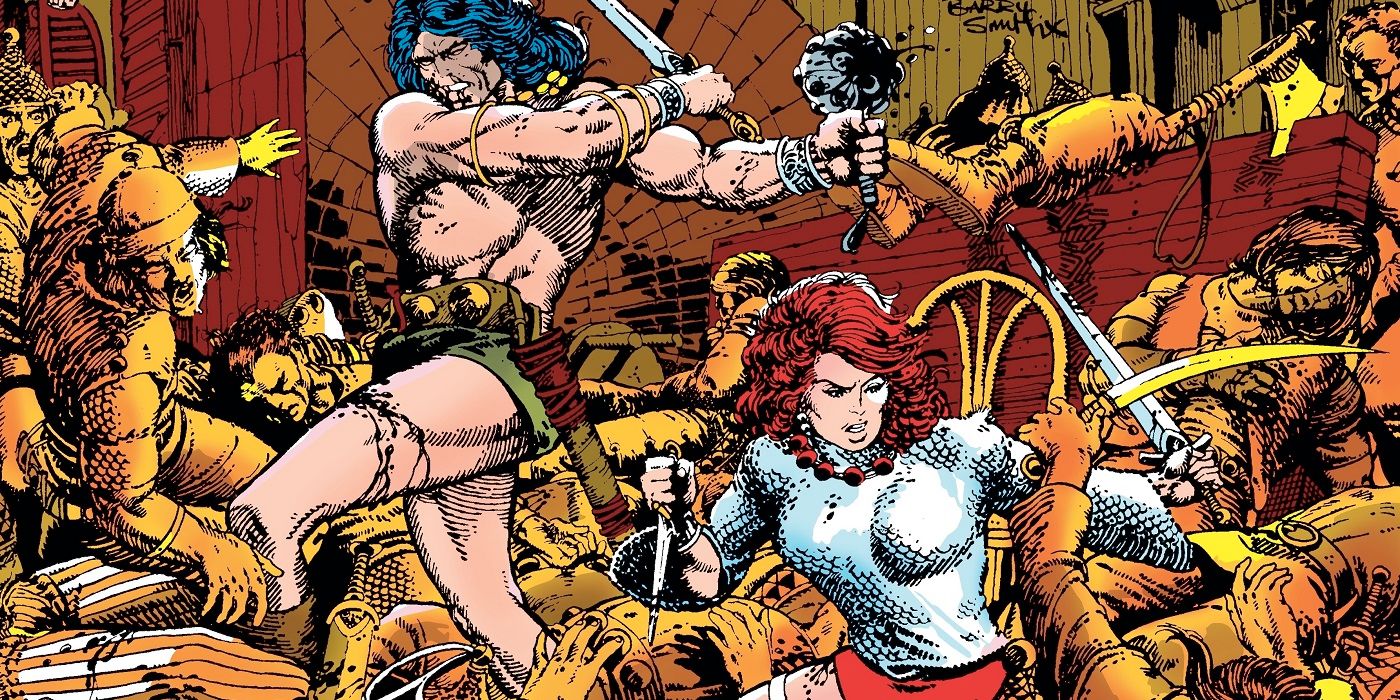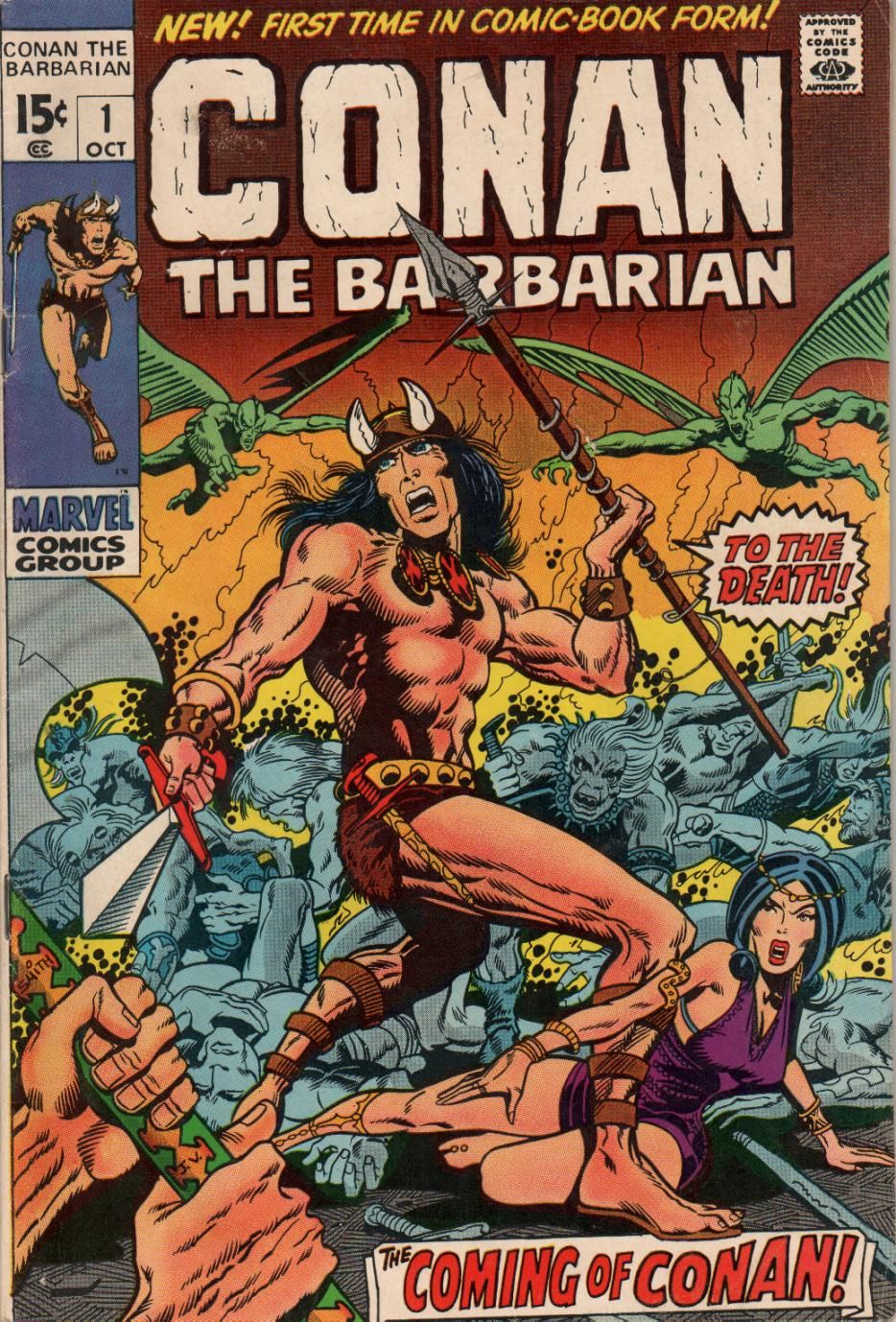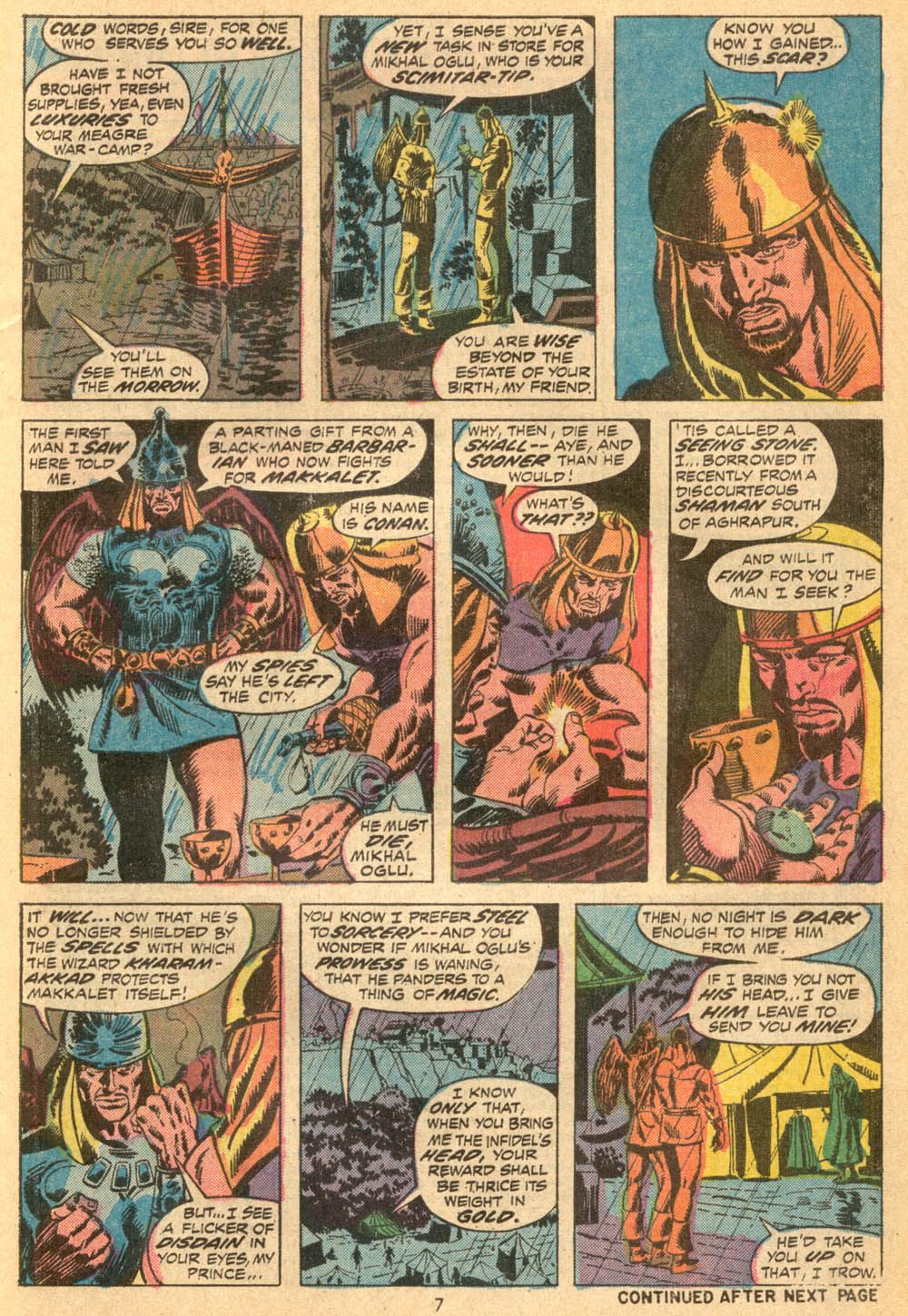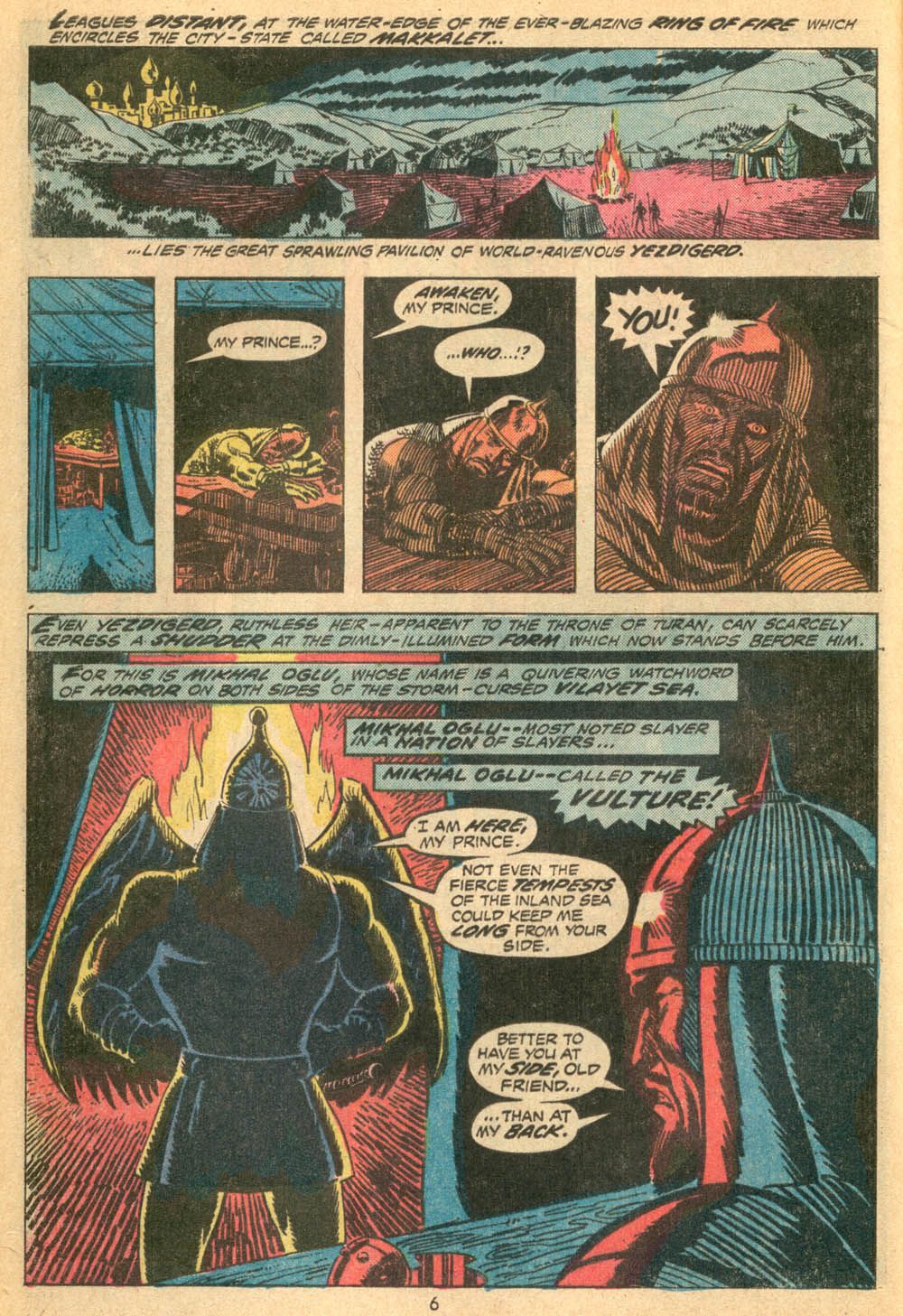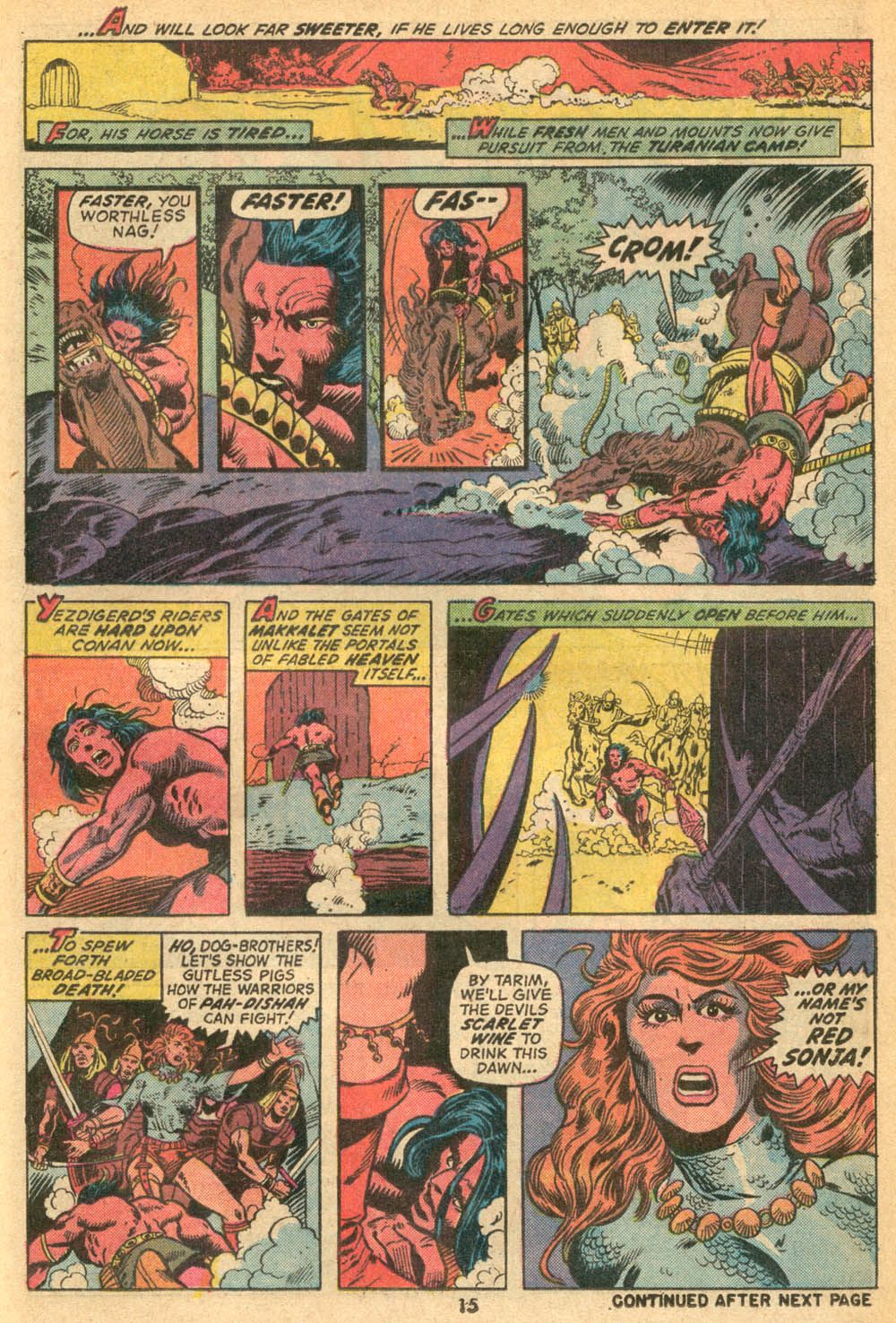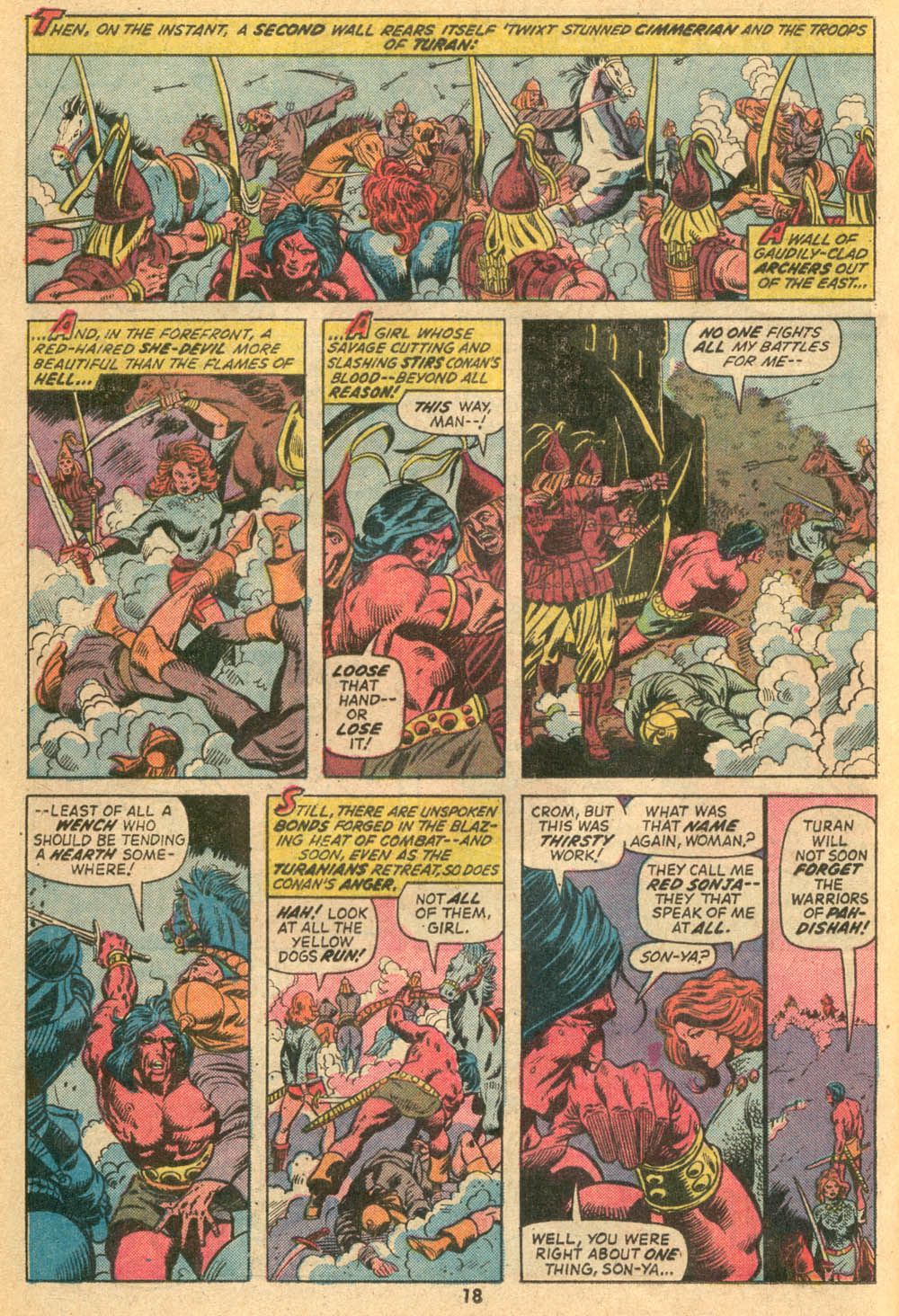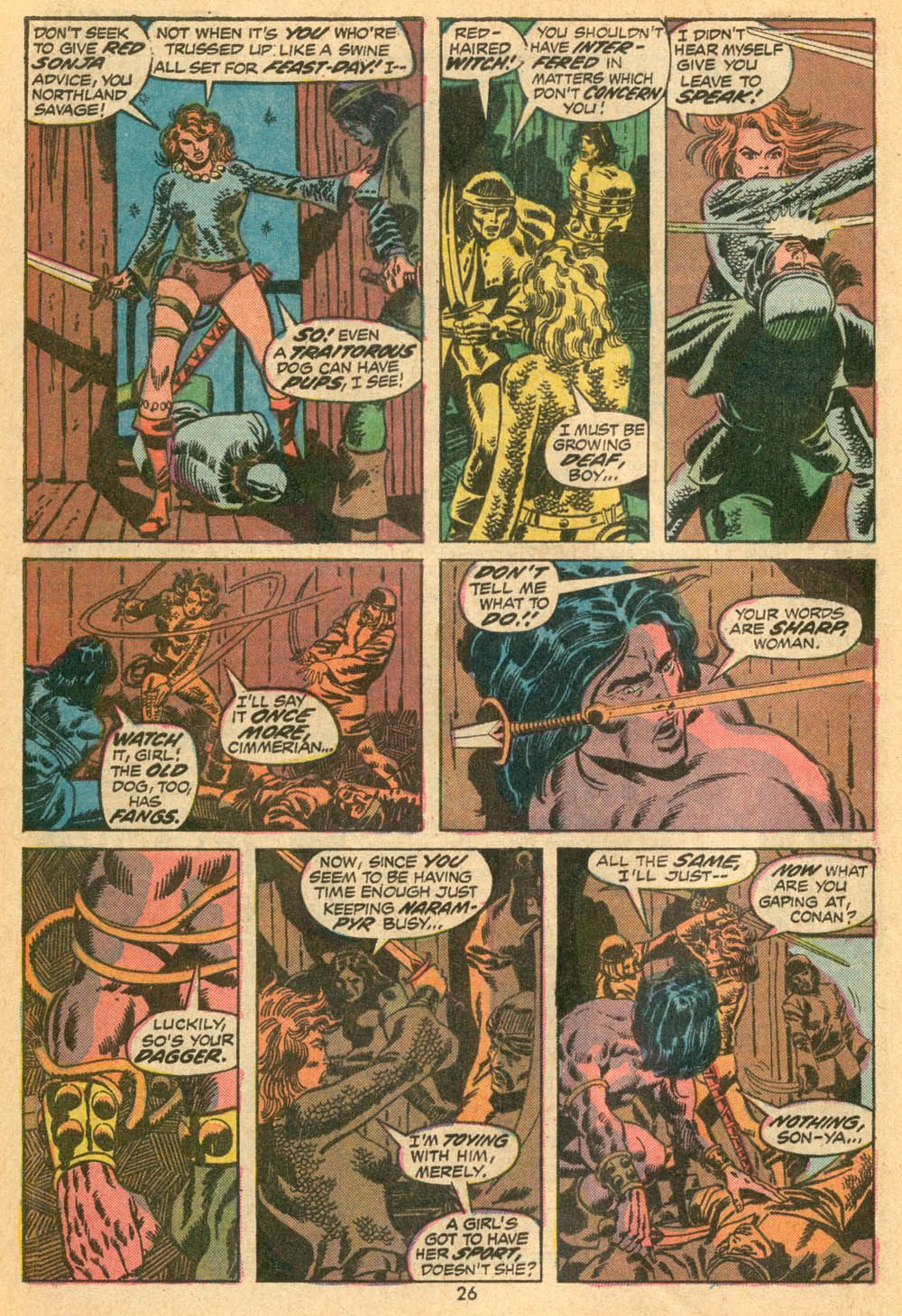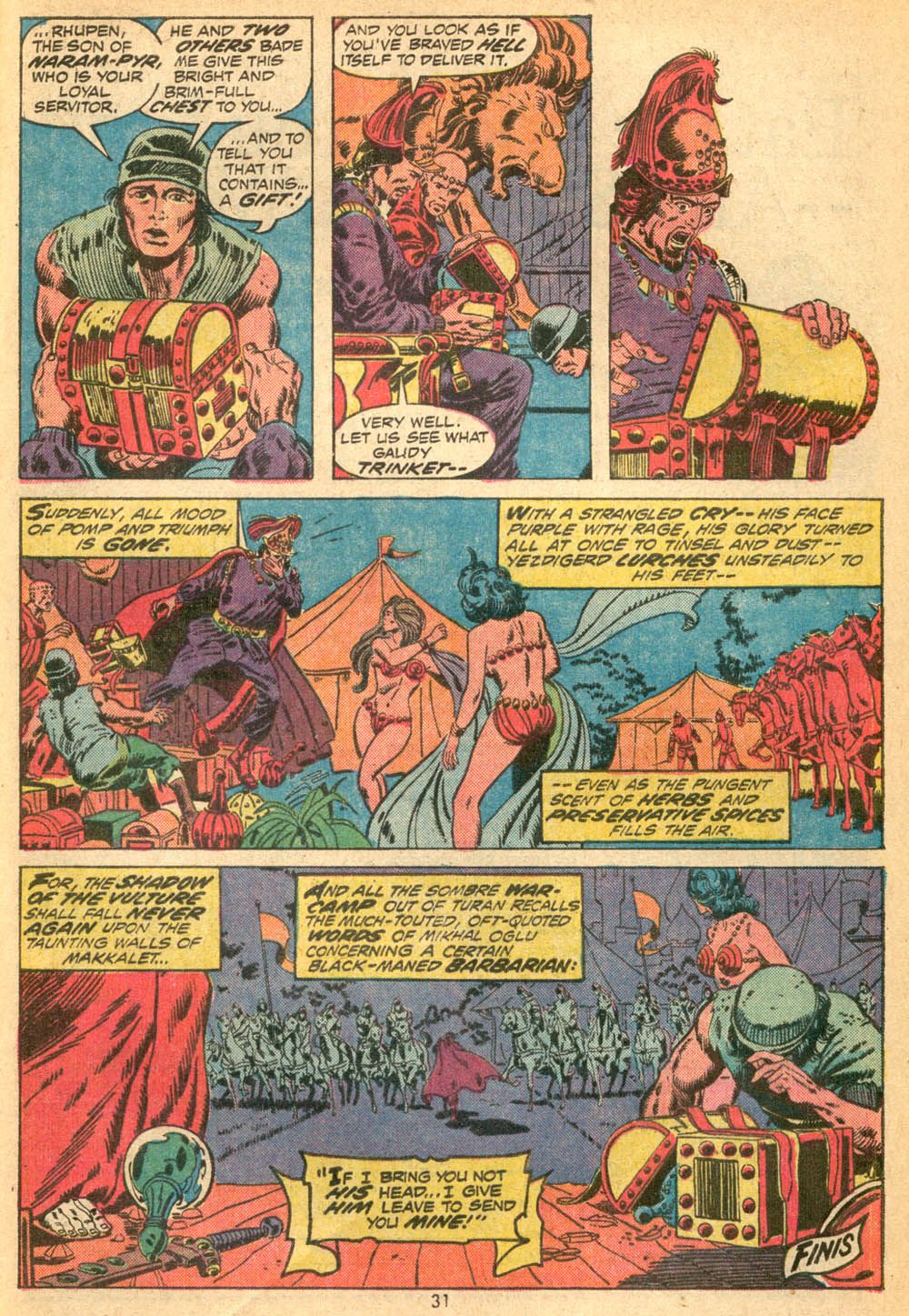Today, we head back 50 years ago, when Red Sonja made her comic book debut saving the life of Conan the Barbarian
This is "Look Back," where every four weeks of a month, I will spotlight a single issue of a comic book that came out in the past and talk about that issue (often in terms of a larger scale, like the series overall, etc.). Each spotlight will be a look at a comic book from a different year that came out the same month X amount of years ago. The first spotlight of the month looks at a book that came out this month ten years ago. The second spotlight looks at a book that came out this month 25 years ago. The third spotlight looks at a book that came out this month 50 years ago. The fourth spotlight looks at a book that came out this month 75 years ago. The occasional fifth week (we look at weeks broadly, so if a month has either five Sundays or five Saturdays, it counts as having a fifth week) looks at books from 20/30/40/60/70/80 years ago.
This time around, we look at November 1972's Conan the Barbarian #23, the debut of Red Sonja, by Roy Thomas, Barry Windsor-Smith, Dan Adkins, Sal Buscema and Chic Stone.
WHERE DID RED SONJA COME FROM?
As I noted in an old Look Back celebrating the 50th anniversary of Conan the Barbarian #1, the fascinating thing abot Marvel's license of Robert E. Howard's Conan character was that the fee was JUST expensive enough that Marvel publisher Martin Goodman would only agree to spend X amount of dollars on this new title (Goodman decided to take the licensing fee out of the production costs of the issue) and that meant that Thomas could not afford to get John Buscema to draw the series. If you know anything about John Buscema, it should be that he preferred to draw pretty much anything BUT superhero comics, so he was really itching at the chance to drawn Conan, especially once Thomas got the license and said, "Hey, would you be interested in drawing Conan?". But because of the restrictions, Buscema, being one of Marvel's there biggest artists at the time (with Gil Kane and John Romita being the other two biggest artists) was off limits.
In stepped a young man named Barry Smith.
Barry Smith had come to America from England with his friend, Steve Parkhouse, to break into American comic books. Smith was heavily influenced by Jack Kirby at this time and he did great work, but then lost his work visa and had to return to England. Thomas enjoyed his work and found assignments for Smith in Marvel's various anthologies until the launch of Conan. With Buscema off limits, Thomas turned to the cheaper Smith, inked by Dan Adkins, and the results were outstanding.
Now, almost three years into the series (it went bi-monthly for a while), Smith was growing tired of drawing the series. Not the series itself, really, as he still enjoyed the series, but he hated the deadlines, and he hated the pay, especially since Smith was putting more and more detail into his work as he matured as an artist. So he left Conan the Barbarian with #24. Luckily, Thomas made his final two issues some of the best issues of the entire series, beginning with #23, the introduction of Red Sonja.
Red Sonja was the result of Roy Thomas hoping to add a compelling female character to the Conan series, and when Thomas heard of an interesting sounding female character from a non-Conan story by Robert E. Howard called "The Shadow of the Vulture," The character in that story was called Red Sonya of Rogatino. She was a 16th century character set firmly in that century.
So Thomas adapted the story for Conan #23, with enough changes to make it work for the comic, including changing Sonya to Sonja.
HOW DID RED SONJA MAKE HER DEBUT IN THE PAGES OF CONAN?
A funny bit in the issue is that the villain, Mikhal Oglu (The Vulure), whose name was a remnant of the original 16th Century Russian setting of the initial story, first debuted in the story on this page...
Roy Thomas didn't think that was a dramatic enough entrance, so he quickly designed a NEW page that would run the page BEFORE that one, and had Sal Buscema draw it...
Fascinating. See how Buscema basically just copied Smith's figure drawing?
In any event, at one point, Conan is on the run from a horde of warriors, and it looks like he's about to be killed when he is suddenly saved by Red Sonja and a group of warriors set to meet the bad guys...
Look how great this battle sequence is by Smith!
Later, Conan is captured by the bad guys, and Sonja saves his life for the SECOND time in this one story!
Finally, a freed Conan takes on the Vulture man-to-man and, well, we see the after-effects of their battle at the end of the story...
The next issue, Smith's final issue, is even BETTER than this one, but, well, that's for another time (the cover of #24 is what I used for the header image, as Sonja is not on the cover of #23)!
If you folks have any suggestions for December (or any other later months) 2012, 1997, 1972 and 1947 comic books for me to spotlight, drop me a line at brianc@cbr.com! Here is the guide, though, for the cover dates of books so that you can make suggestions for books that actually came out in the correct month. Generally speaking, the traditional amount of time between the cover date and the release date of a comic book throughout most of comic history has been two months (it was three months at times, but not during the times we're discussing here). So the comic books will have a cover date that is two months ahead of the actual release date (so October for a book that came out in August). Obviously, it is easier to tell when a book from 10 years ago was released, since there was internet coverage of books back then.

